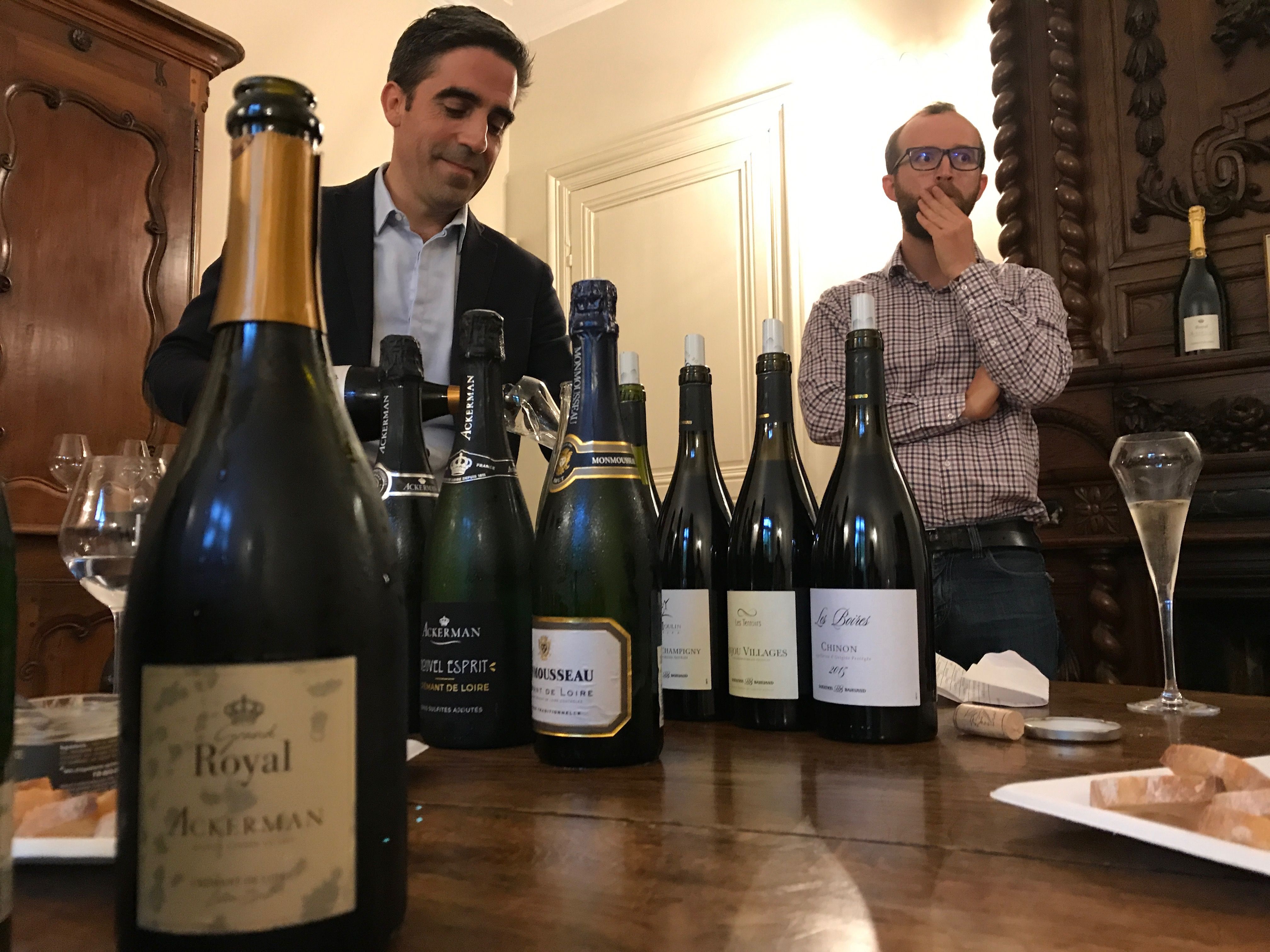The similarity of high end Crémant to Champagne and its comparatively ‘better value’ is something all Crémant producers are keen to point out, writes Dean
As you head west from the town of Saumur with the River Loire flowing to your right, down rue Léopold Palustre, you start entering the historic St-Hilaire St-Florent district where all the sparkling wine houses are located. Every colossal building either side of the road is a either a mansion, working winery or derelict warehouse that have all been built in the name of Crémant de Loire and Saumur Brut – or Saumur Champagne as it used to be called until the Champenoise got a little bit uppity.

In 1892 you were no longer allowed to call it Saumur Champagne and from 1984 not allowed to say méthode champenoise
Actually you might think it looks a little like Avenue de Champagne in Epernay with less money behind it, but that is not strictly the case. Langlois-Chateau (established 1855) is owned by Bollinger while next door neighbours Ackerman (established 1811) is owned by Orchidées Maisons de Vin, the number one exporter of Loire Valley wines and market leader of AOP Crémant de Loire. Turnover last year – €72m. Orchidées is in turn 95% owned by Terrena, the French agri-food cooperative that has a €4.9 billion annual turnover.

Ackerman headquarters, Saumur, the Loire
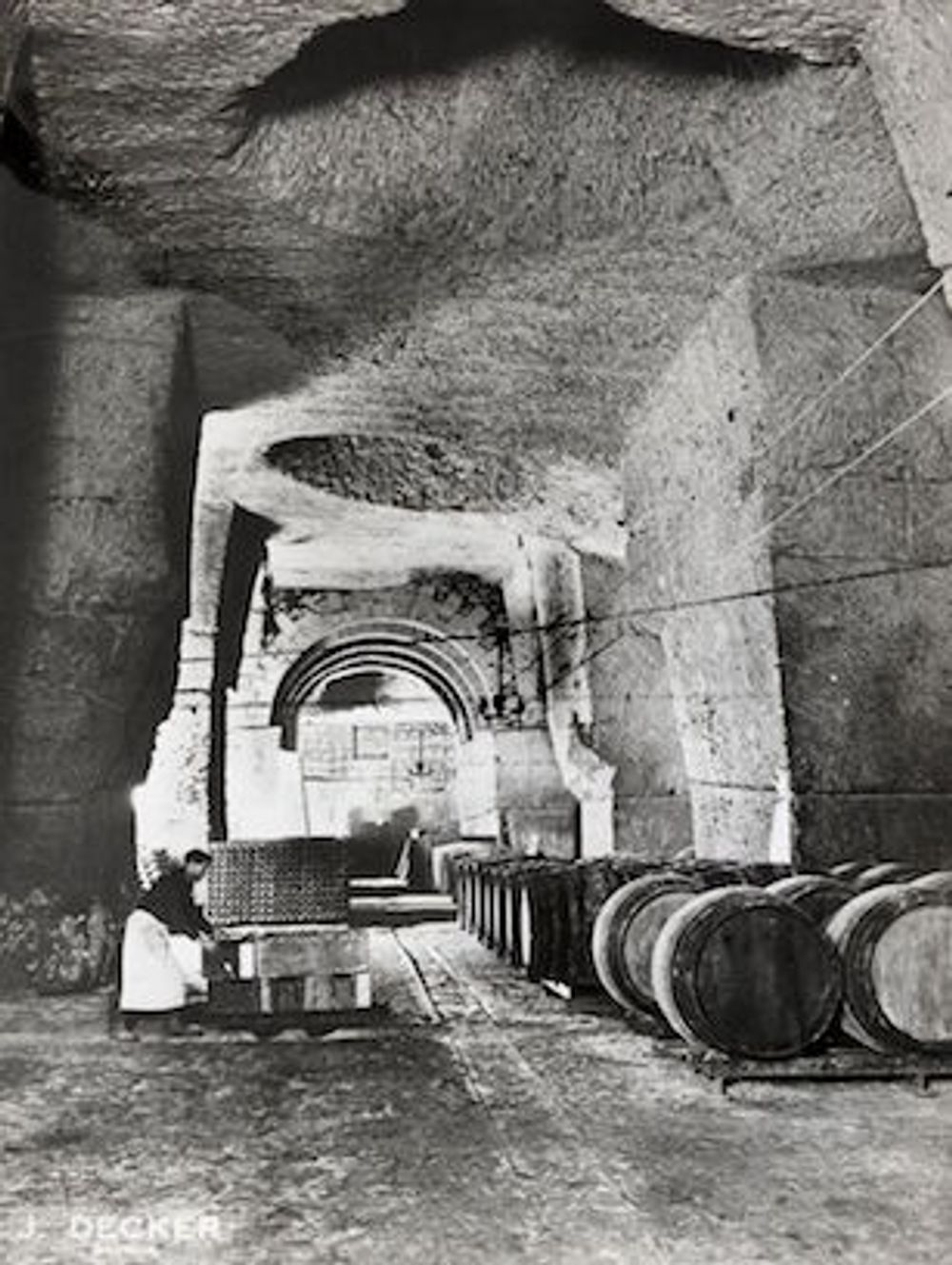
The high vaulted caves at Ackerman
The reason for this particular geographical location is that it is absolutely perfect for a pre-industrial winemaking region. In fact, if you were to set about designing one from scratch, chances are you would end up with a location exactly the same as St-Hilaire St-Florent.
The reason is that the Loire’s South Bank is made up of a 50 metre high plateau that the river has cut into, made of tuffeau, a type of limestone that is perfect for vines to dig their roots into and is also jolly good for building chateaux out of. As the rock was excavated during France’s Renaissance period in the Sixteenth Century so the quarries left giant caves that were just great for later housing wineries and also wine storage.
On top of the plateau is arable land where vines were planted and, in one of the earliest examples of gravity-fed wineries, fruit transported down into the wineries below, where wines were made and stored in perfect, stable temperatures. Once finished the wines had gravity again on their side to make it to the 4km wide lazy Loire (which also raises the average diurnal temperature all year round) that could take the wines to sea or most likely through the canal network up to the Seine and Paris.
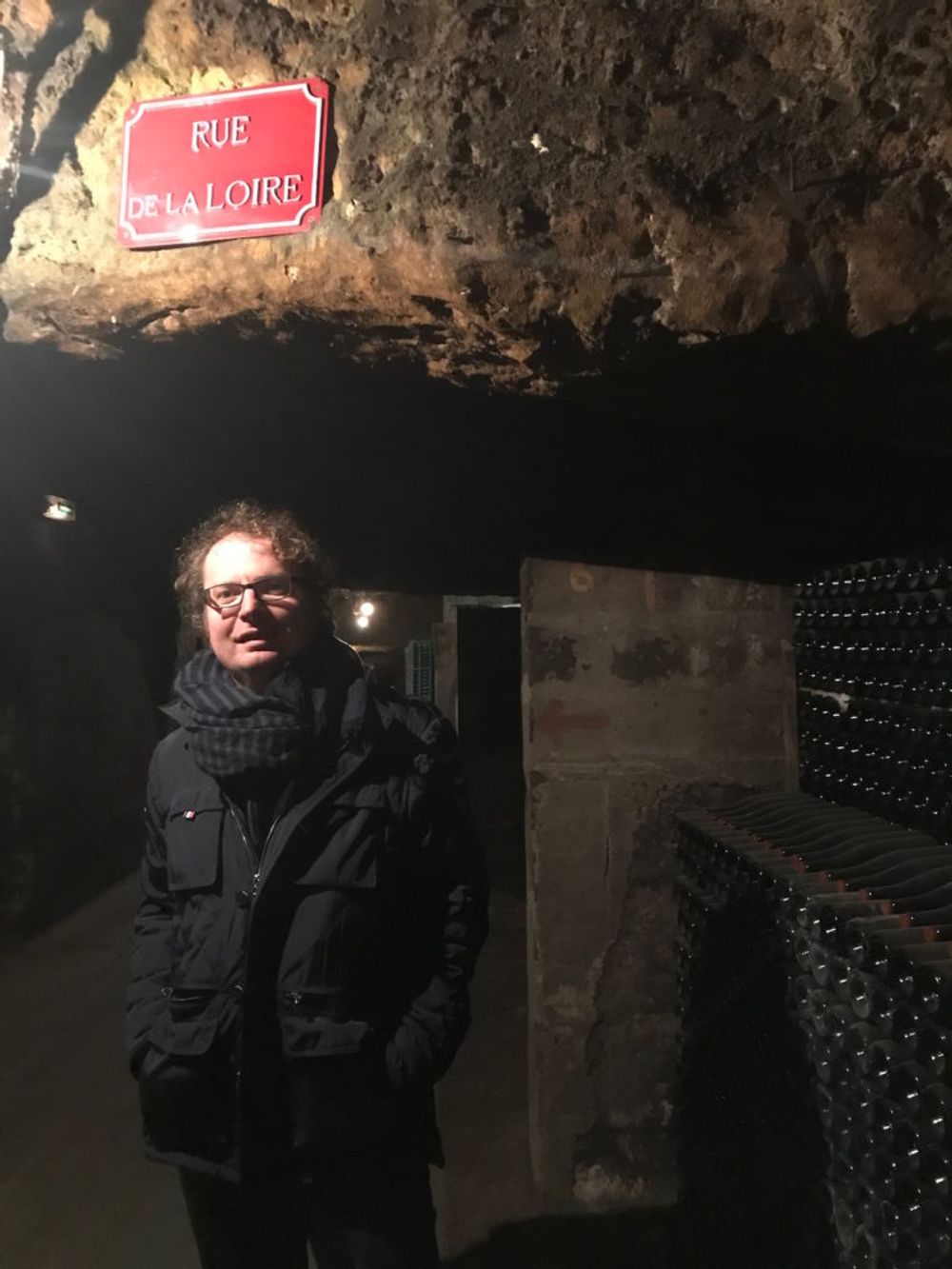
Laurent Onillon commercial manager in the caves of Langlois-Chateau: they are so extensive road names are used to stop workers losing their bearings.
How us Brits are drinking way more Crémant de Loire
As sales of Crémant de Loire start packing some punchy numbers again, houses like Ackerman and Langlois-Chateau are keen to remind the wine world that Champagne didn’t always have things its own way. Sparkling Loire Valley wines have a strong presence and a rich heritage.
Latest figures from trade body InterLoire show that in the past 12 months, sales of mousseux to the UK (Crémant de Loire, Saumur and Vouvray) have increased by 71% with Crémant largely responsible having almost doubled its sales year on year to the UK.
The overall category of Loire fizz has been recapturing a bit of sparkle – since 2015 sales have trebled. Saumur Brut has shown marginal growth in that time frame with a 10% dip last year while Crémant de Loire has gone from strength to strength with 400% growth over four years. In the past 12 months over 12,000 hectolitres has been exported to the UK alone.
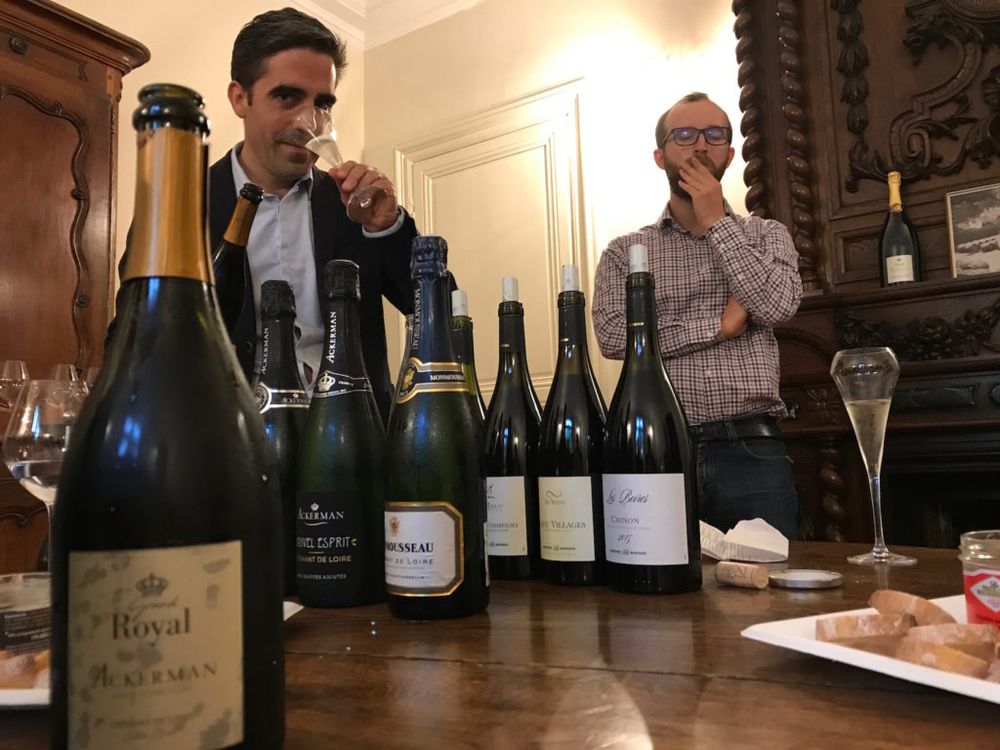
Julien Goudeau PR manager for Orchidées Maisons de Vin and François Reverdy, area sales manager (l-r)
François Reverdy, area sales manager for Orchidées, thinks that the discrepancy between stagnating sales of Saumur Brut and the massive increase in Crémant could be down to something as simple as the name.
“Saumur is still important from the early Nineteenth Century but Crémant is the growing category. With Crémant de Loire people know what the Loire is but not necessarily Saumur,” he says.
Traditional cuvées still have great potential – Ackerman produces 1811, the Saumur Brut that is their largest seller by far and retails in France for about €5.50 a bottle – and its Touraine AOP Blanc Cuvée JM Brut Monmousseau which has been aged for 36 months is clearly of premium quality. The latest product lines that the company are developing, however, are all Crémant de Loire and not Saumur Brut. Langlois-Chateau does not produce any Saumur Brut – only Crémant de Loire.
“After Prosecco some importers are clearly looking for the next big thing and Crémant is our focus – Crémant and the development of our export sales are the heart of our strategy,” Reverdy says.
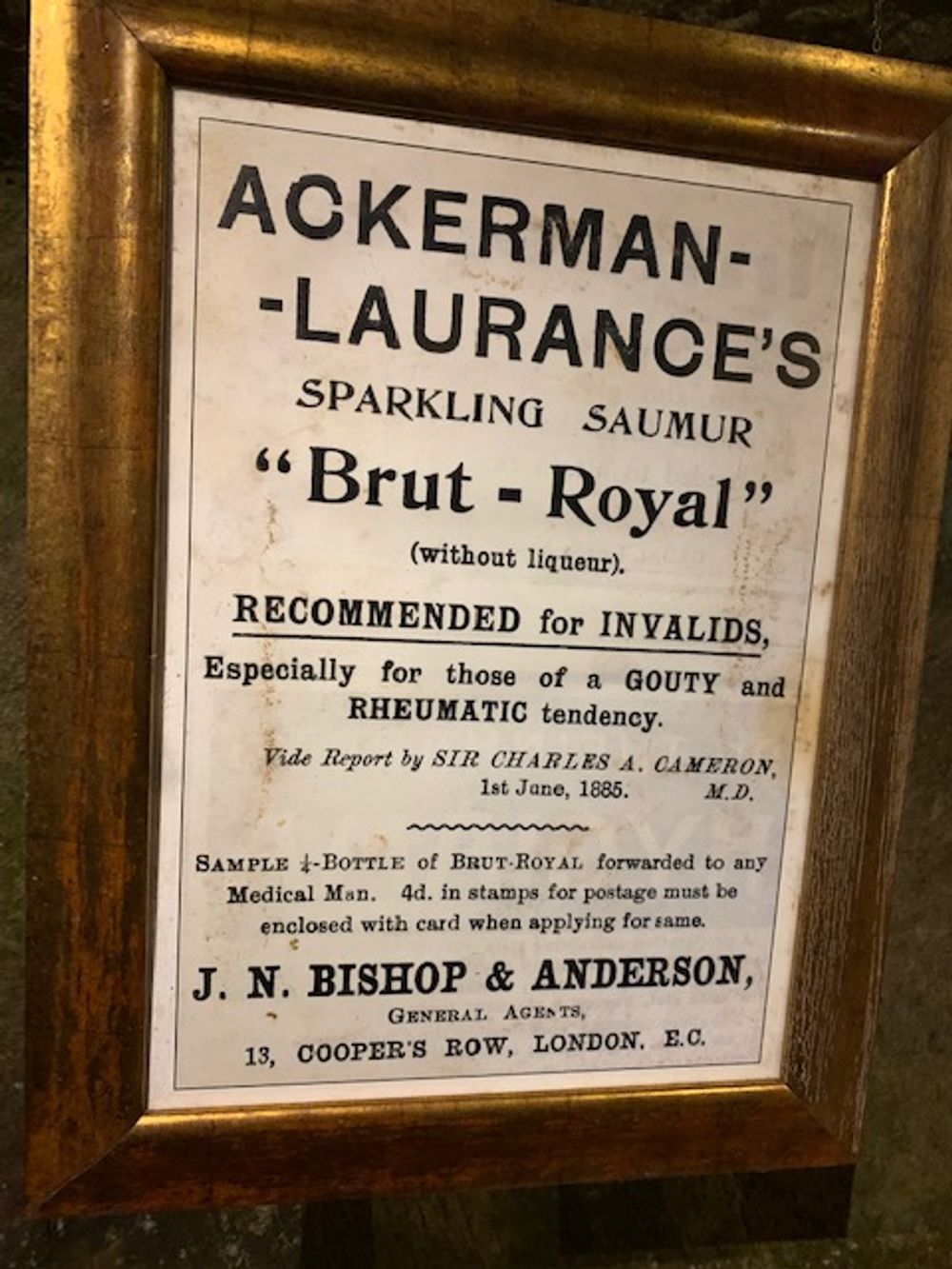
Those were the days, when your doctor would prescribe Saumur Brut
Even though Ackerman had a royal warrant and supplied the British army, the company is without an importer in the UK, having last been sold through Hayward Brothers and M&S.
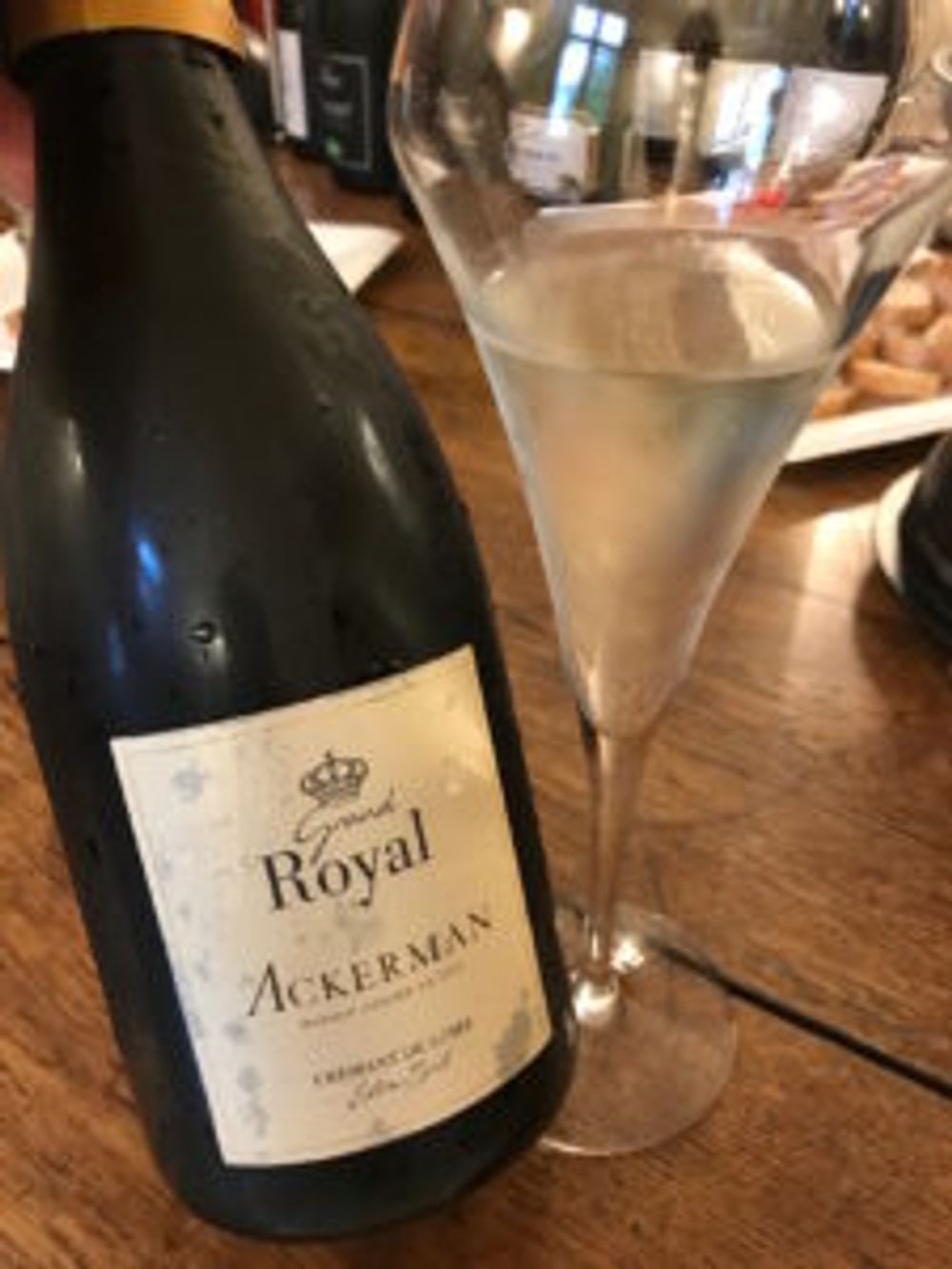
Soon to be launched: the excellent Grand Royal Extra Brut
Reverdy is in the process of rectifying that, keen to show me an impressive range of premium cremant from new lines such as an organic sparkling, the sulphite-free Nouvelle Espirit through to the soon-to-be-launched Grand Royal Xtra Brut (60% Chardonnay, 30% Chenin and 10% Cabernet Franc) which spends up to three years on the lees and was very fine, elegant and classy.
The similarity of high end Crémant to Champagne and its comparatively ‘better value’ is something all Crémant producers are keen to point out, Reverdy not excepted.
“Crémant is a growing catgory. As an industry we set up a body of producers and have invested in marketing and communications, after all it is such a good price and value compared to Champagne.”
Where there are caves, tourists will follow
Apart from the wines themselves, tourism plays an important role in the Loire Valley. In 2017 there were 1.6 million visitors to the 1,000 or so wineries open to the public, 15% of which were tourists, the Brits being the third largest in number.

InterLoire has a Caves Touristiques system, of which 350 take part, to make it easier for tourists to locate wineries that are open to visitors and cellar door sales. Unlike large de-centralised wine regions such as Bordeaux, for example, the Loire’s geography means that it is far easier to navigate and make sense of the Loire Valley, and for domains to hail in passing trade.
The caves of the Saumur region are an attraction in their own right – with or without wine – the region is studded with troglodyte dwellings where houses appear to emerge out of the rock. As for the caves of the Saumur Brut and Crémant houses – they are a major attraction.
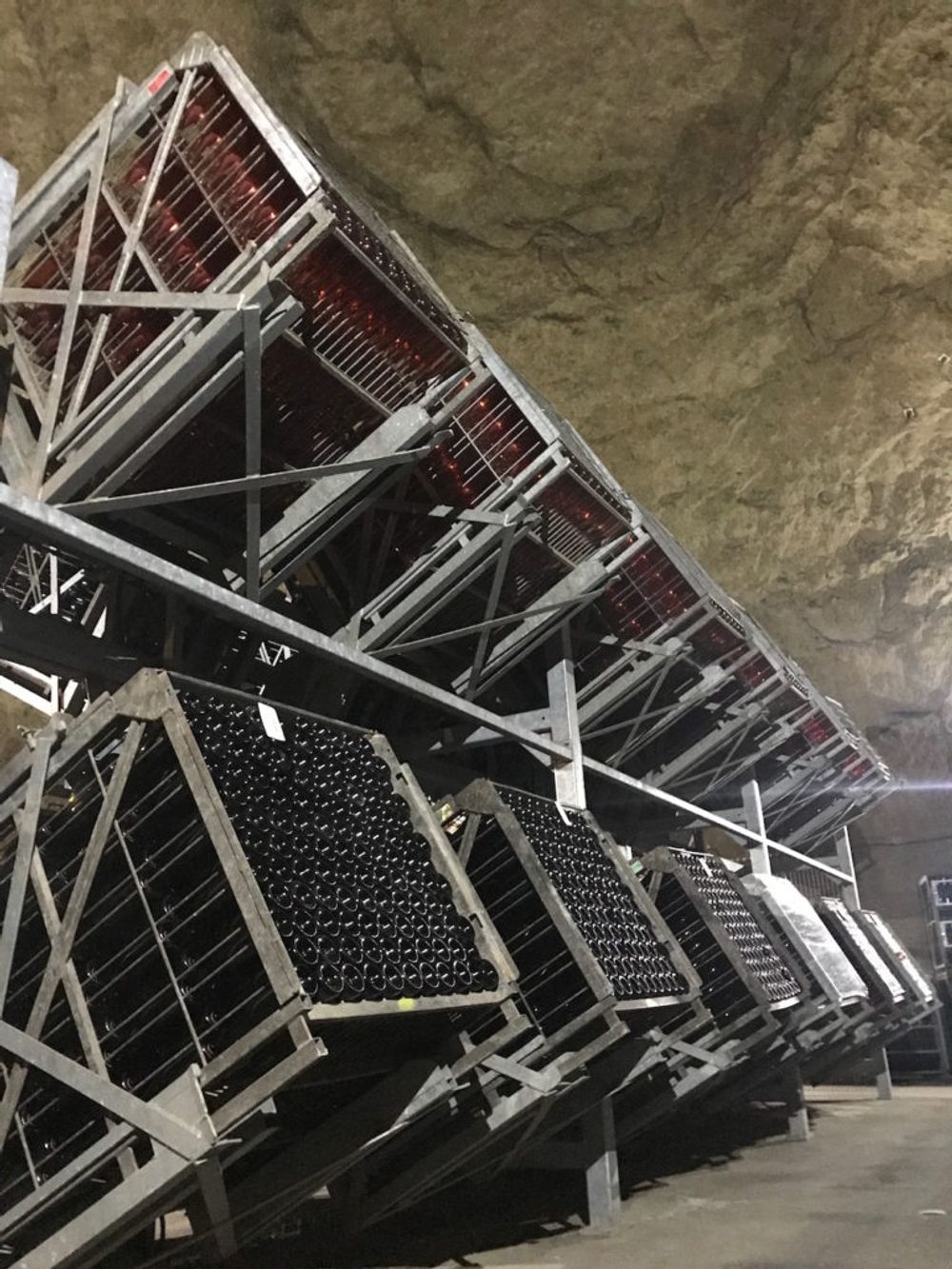
The caves at Langlois-Chateau are still operational with these giant sets of riddlers
Langlois-Chateau has many kilometres of caves, a network so big that there are street names and workers move around on motorised vehicles; the estate still produces Crémant in their caves with sets of riddling machines that wouldn’t look out of place in a sci-fi film.

Modern cave ‘painting’ – the extraordinary string/ black light installation in the Ackerman cellars. Julien Salaud Naturotica: ©DirectImage
The seven kilometres of caves of Ackerman next door have vaulted, church-like ceilings (carved so high to let light in) and since they moved the 10 million bottles they used to store there into a more modern facility, the caves are a museum, events and gallery space where stunning installations are housed. Over 40,000 visitors visit the caves each year.
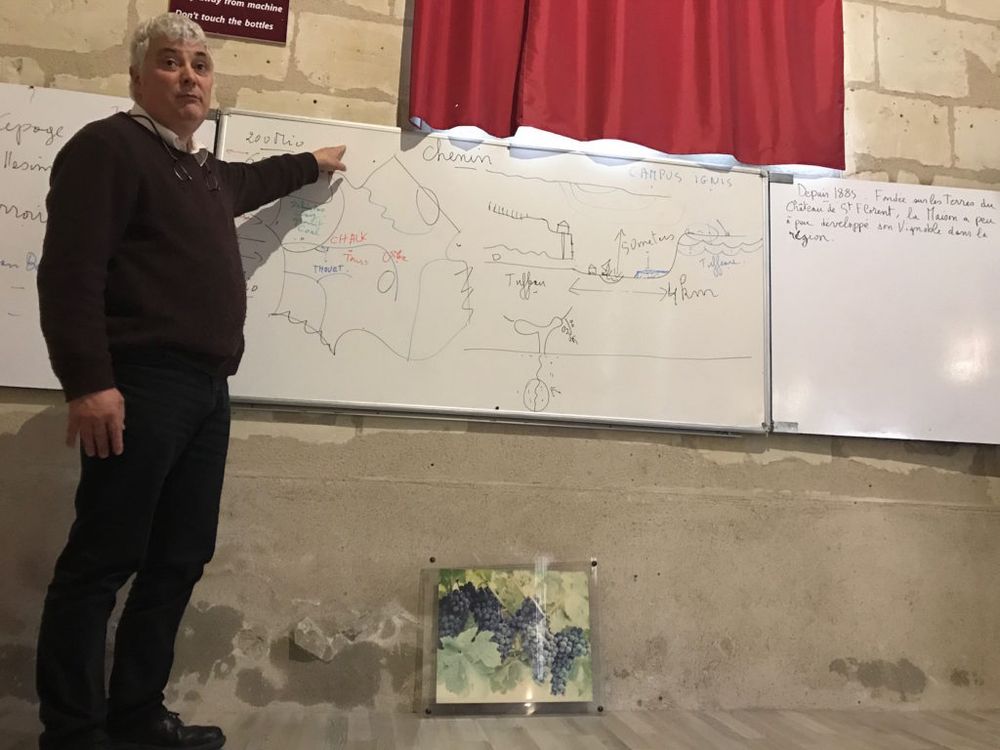
Educating the consumer: Langlois-Chateau’s visit actually begins in a classroom so that consumers get to be taught the basics
In conclusion…
There are signs in the UK market, particularly at the premium end that some consumers are tiring of Prosecco and are looking for an alternative to that and Champagne. So long as Crémant keeps sourcing good quality grapes and emphasises ‘premium’ and pushing price points upwards then it has a very healthy future indeed in the UK. The latest sales figures are already confirming that. Sommeliers might have to do a bit of hand-holding but, with the Crémant trade body’s education and marketing programme already in place – things are all moving in the right direction.
